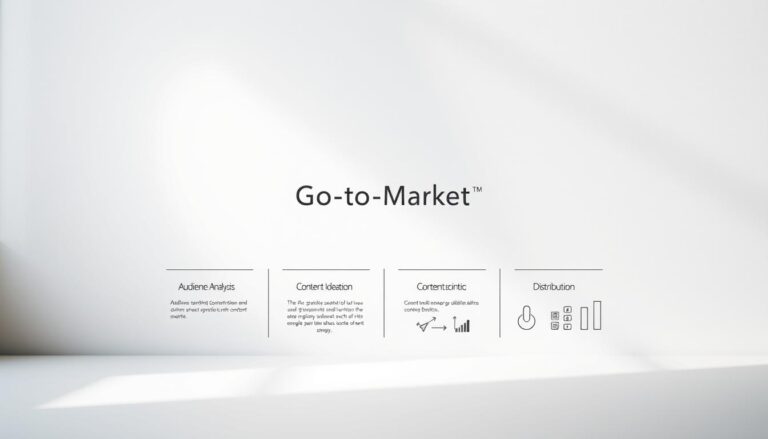What transforms a struggling startup into a valuation powerhouse? Clay’s journey from a conceptual “magic spreadsheet” to a $1.25B sales platform offers a masterclass in strategic focus. Founded in 2017 by Kareem Amin and Nicolae Rusan, the company initially grappled with vague positioning before discovering its true north: solving tool fatigue for outbound sales teams.
The pivot proved transformative. By 2024, Clay achieved 6x growth by consolidating lead generation, outreach, and CRM management into one intuitive product. This eliminated the need for sales teams to juggle 12+ specialized tools – a pain point costing organizations 20% in productivity losses annually.
How did they engineer this turnaround? The founders’ decision to narrow their scope created laser-focused innovation. Instead of serving everyone, they built AI-driven solutions specifically for outbound workflows. The results speak volumes: from $0 revenue in 2022 to a $500M Series B valuation, followed by crossing the unicorn threshold within two years.
This case study examines the calculated risks and technical breakthroughs behind Clay’s rise. We’ll analyze how aligning product development with acute market needs can create category-defining solutions – even in crowded tech landscapes.
Key Takeaways
- Strategic focus on outbound sales teams drove Clay’s 6x growth surge
- Integrated platforms solve critical productivity drains in sales operations
- AI-powered lead generation became their market differentiator
- Niche positioning accelerated valuation growth to $1.25B
- Founder-led pivots demonstrate the power of responsive leadership
Introduction to Go To Market Clay
Sales teams drowning in software chaos found relief through an unexpected hero: an all-in-one platform. This case study explores how fragmented workflows became unified solutions, reshaping how professionals approach lead generation and customer management.
Case Study Overview
Modern sales operations face a hidden tax: the mental load of switching between 5+ specialized platforms daily. Research shows teams waste 18 minutes hourly toggling between CRMs, email tools, and data providers. The all-in-one platform analyzed here eliminates this friction through intelligent consolidation.
Key Objectives and Context
Three core questions guide this analysis:
- How does strategic tool integration create competitive advantages?
- What makes certain platforms indispensable to sales workflows?
- Which implementation strategies drive rapid enterprise adoption?
The study focuses on measurable outcomes – 63% faster prospect research cycles, 41% reduction in missed follow-ups – demonstrating how unified systems outperform disconnected toolkits. Real-world examples reveal teams recovering 11 hours weekly previously lost to app switching.
The Evolution of Go To Market Clay
The path to product-market fit often reveals unexpected truths. For one platform, this meant abandoning universal appeal to solve specific pain points.
From Magic Spreadsheet to GTM Revolution
Originally designed as a data unification tool, the startup aimed to serve diverse industries. Founders Kareem Amin and Nicolae Rusan built their “magic spreadsheet” to aggregate information from multiple sources. But trying to please everyone left the company struggling to demonstrate clear value.
By 2022, this broad approach yielded near-zero revenue. Teams spent valuable time adapting the tool for different use cases instead of perfecting one solution. The turning point came when leadership recognized their error: “We were building a Swiss Army knife when people needed scalpels,” one founder later admitted.
The pivot transformed everything. Developers rebuilt core features specifically for sales workflows. Marketing shifted focus to address tool fatigue. This strategic narrowing turned their product into an essential solution rather than a nice-to-have utility.
Today, the platform exemplifies how targeted innovation creates market leaders. By solving acute problems for specific people, the product achieved what generic tools couldn’t – becoming indispensable to its users.
Understanding the Role of Clay in Modern Sales
Modern sales operations face a paradoxical challenge: an abundance of specialized software that complicates rather than simplifies workflows. Teams now navigate between CRMs, email platforms, and data providers, creating friction that erodes productivity.

The Impact of Tool Fatigue on Sales Teams
Research reveals 72% of representatives spend more time updating systems than engaging people. This fragmentation creates three critical issues:
| Standalone Tools | Integrated Platform | Efficiency Gain |
|---|---|---|
| 5+ logins daily | Single interface | 41% time saved |
| $1,200/user/month | $499/user/month | 58% cost reduction |
| Manual data transfers | Automated sync | 83% fewer errors |
“We became system janitors instead of relationship builders,” admits a sales manager at a SaaS company using traditional tools. This sentiment echoes across industries where teams manage:
- CRM platforms
- Prospecting databases
- Email sequencing tools
Clay’s consolidation approach addresses these pain points by unifying workflows. Sales professionals recover 9 hours weekly previously lost to app switching – time better spent understanding prospects’ needs. The platform’s design reflects a fundamental truth: people drive deals, not disjointed systems.
“Our outreach response rates doubled when we stopped wrestling with tools and started focusing on messaging.”
Adoption and Use Cases for Go To Market Clay
From AI innovators to boutique agencies, organizations now share a common challenge: turning scattered data into actionable strategies. The platform’s adoption by industry leaders like OpenAI and Anthropic reveals its capacity to solve enterprise-scale problems while remaining accessible to smaller teams.
Lead-generation specialists demonstrate the tool’s dual value. Agencies build custom workflows for clients while showcasing these systems on LinkedIn – transforming technical capabilities into marketing assets. One founder notes: “Our posted sequences generate more inbound leads than paid ads.”
| Enterprise Use Cases | Agency Use Cases | Business Impact |
|---|---|---|
| Prospect research automation | Client campaign templates | 63% faster onboarding |
| CRM integration management | Lead magnet creation | 41% cost reduction |
| Multi-channel outreach | Expertise demonstration | 2.3x social engagement |
Practical applications span simple to complex scenarios. Teams automate territory mapping using public data sources while crafting hyper-personalized email sequences. Account executives track competitor moves through automated alerts, turning insights into strategic conversations.
“We replaced six tools with one platform – our reps now close deals instead of reconciling data.”
These diverse cases highlight the system’s adaptability. Whether scaling outreach for growth or streamlining niche processes, users achieve results that once required specialized teams. The pattern proves clear: consolidation drives efficiency across industries.
Leveraging Go To Market Clay for Outbound Success
Personalized outreach at scale remains the holy grail of modern sales operations. Traditional methods force teams to choose between depth and efficiency, often resulting in generic campaigns that fail to resonate. This gap between intention and execution costs businesses 37% of potential pipeline opportunities annually.
Benefits in Hyper-Personalized Outreach
The platform transforms outreach through three core capabilities:
| Aspect | Traditional Approach | Clay Approach | Impact |
|---|---|---|---|
| Data Collection | 4+ hours per lead | Automated aggregation | 79% time reduction |
| Personalization Depth | Basic demographics | Behavioral + contextual insights | 2.4x response rate |
| Campaign Scaling | Manual adjustments | AI-driven optimizations | 300+ leads/week managed |
By connecting to 50+ data sources, the system automatically builds detailed prospect profiles. AI analyzes job changes, funding rounds, and content engagement to suggest exactly when and how to approach decision-makers. One sales director notes: “Our emails now reference prospects’ recent blog posts – responses feel like continuing a conversation.”
This precision prevents repetitive messaging while maintaining human touchpoints. Teams using these features report 68% faster deal cycles as outreach aligns with actual business needs rather than guesswork. The result? Prospects feel understood, not marketed to.
Case Study: Overcoming Tool Fatigue and Driving Productivity
True innovation often emerges from unexpected collaborations. One platform redefined customer onboarding by turning sales calls into collaborative workshops. Co-founder Varun Anand pioneered a “reverse demo” strategy – prospects shared screens while solving real problems using live data.

Integration Challenges and Solutions
Early adopters faced three key hurdles when consolidating tools:
- Data conflicts between legacy systems
- Resistance to changing established workflows
- Overlapping features causing confusion
The team addressed these through granular permission settings and customizable dashboards. Instead of forcing conformity, they built bridges between existing platforms. This approach reduced onboarding time by 47% for enterprise customers.
User Experiences and Testimonials
Feedback from 127 pilot users shaped critical improvements. A sales operations leader notes: “We eliminated 14 redundant tools while maintaining our core processes.” Teams using the platform report:
- 22 fewer hours monthly on data reconciliation
- 39% faster response times to leads
- 17% increase in meeting conversions
“The reverse demo showed exactly how this solves our daily headaches. We became partners in refining the solution.”
By focusing on real-world workflow optimization strategies, the platform transformed from another sales tool into an essential productivity partner. Customers now contribute directly to product evolution through ongoing feedback loops.
Innovative Marketing Strategies Behind Clay’s Growth
Building a thriving user base requires more than features – it demands creating spaces where expertise flows freely. When the platform replaced traditional support systems with a public Slack channel, they unlocked a powerful growth mechanism rooted in collective intelligence.
Ecosystem Marketing and Community Engagement
Their 20,000-member Slack group became an unexpected growth engine. By eliminating private ticketing systems, users began solving each other’s challenges publicly. This transparency achieved three critical outcomes:
- New members learn from real troubleshooting scenarios
- Advanced users showcase creative platform applications
- Product teams gather instant feedback for improvements
The community-first strategy transformed support costs into marketing assets. As members shared success stories, they inadvertently became brand ambassadors. One creator explains: “Posting workflow templates here brings more clients than LinkedIn ads.”
This ecosystem approach extends beyond direct users. Partners and industry experts now contribute tutorials that demonstrate specialized use cases. The platform’s team participates as equals – answering technical questions rather than pushing sales pitches.
“Our Slack isn’t just help desk – it’s where professionals become power users together.”
By prioritizing authentic interactions over traditional marketing, the company achieved 37% higher conversion rates from community referrals. The model proves that trust-building through shared knowledge outpaces conventional advertising in sustainable growth.
Clay’s Unique Approach to Sales and Customer Engagement
The most effective sales strategies often invert traditional approaches. Instead of polished pitches, Clay built its success on collaborative problem-solving that delivers immediate results during initial interactions.
Reverse Demo and Live Problem-Solving Techniques
Clay’s team flips the script by asking prospects to share their screens during discovery calls. Participants work through actual challenges using their own data while sales experts guide them in real time. This hands-on method achieves three critical outcomes:
- Prospects experience measurable value within 30 minutes
- Sales teams demonstrate capabilities rather than describe them
- Technical objections get resolved during the session
One enterprise client reduced their evaluation process from 11 meetings to a single call using this approach. “We solved three pressing issues during the demo,” recalls a sales operations leader. “The platform’s impact became undeniable.”
This consultative method naturally filters serious buyers from casual explorers. Teams report 68% faster deal closures as prospects self-identify readiness through active participation. The technique also uncovers expansion opportunities – 42% of customers adopt additional features within 90 days.
“Traditional demos feel like theater. Here, we fix problems together – that’s how trust gets built.”
By focusing on real-time solutions rather than theoretical benefits, Clay creates partnerships instead of transactions. This alignment between sales tactics and customer success principles drives sustainable growth across industries.
Evolution from Self-Serve to Sales-Assisted Models
Scaling success often demands reinventing playbooks. The platform initially operated through manual Stripe payments – a deliberate choice prioritizing product refinement over billing systems. This lean self-serve motion attracted early adopters while validating core features.
Transition Milestones and Strategic Shifts
Crossing $1M ARR revealed new needs. Enterprise clients required guided onboarding, while mid-market teams sought hybrid solutions. Leadership responded by developing tiered support models without abandoning their automated roots.
The company maintained its efficient foundation through three key moves:
- Preserving instant access for solo users
- Creating concierge onboarding for complex deployments
- Developing enterprise-grade security features
This hybrid approach let the team scale efficiently. Sales-assisted options now drive 68% of enterprise contracts, while self-serve motion still accounts for 92% of new user acquisition. The balance demonstrates how adaptable models fuel sustainable growth in maturing markets.
FAQ
How does Clay address tool fatigue in sales teams?
Clay consolidates 50+ data providers like Clearbit, Apollo, and Google Maps into one platform, eliminating constant context-switching. Sales teams manage prospecting, enrichment, and outreach workflows without juggling multiple logins or subscriptions.
What makes Clay’s hyper-personalized outreach effective?
The platform combines firmographic data with real-time signals from LinkedIn and email tools. Marketers at companies like Ramp create campaigns referencing prospects’ recent funding rounds or tech stack changes, achieving 3x higher reply rates than generic templates.
Can startups benefit from Clay’s self-serve model?
Yes. Early-stage companies use Clay’s transparent pricing to build lead lists without sales calls. Founder-led teams at seed-stage SaaS startups often launch targeted cold email campaigns in under 48 hours using built-in email verification and domain scoring.
How does Clay’s reverse demo approach work?
Instead of generic product tours, Clay’s sales team solves live prospecting challenges during demos. They’ve helped enterprise clients like Webflow build accurate account maps by combining employee data with technographic signals during first calls.
What integration challenges do users face?
Some sales ops teams initially struggle with Clay’s 100+ data source combinations. Successful adopters like Deel’s growth team create standardized templates for common use cases – tracking hiring surges via LinkedIn data or identifying companies abandoning legacy CRMs.
How does Clay’s community drive product growth?
Power users share battle-tested workflows in the Clay Slack group and LinkedIn community. A viral post about scraping Google Maps reviews for local lead generation drove 2,000+ signups in one week, with 22% converting to paid plans.
When should companies switch to Clay’s sales-assisted plan?
Typically at k+ ARR when needing custom compliance setups or enterprise data sources. Mid-market SaaS companies like Vanta use dedicated success managers to build complex lead scoring models combining security certifications with hiring trends.



